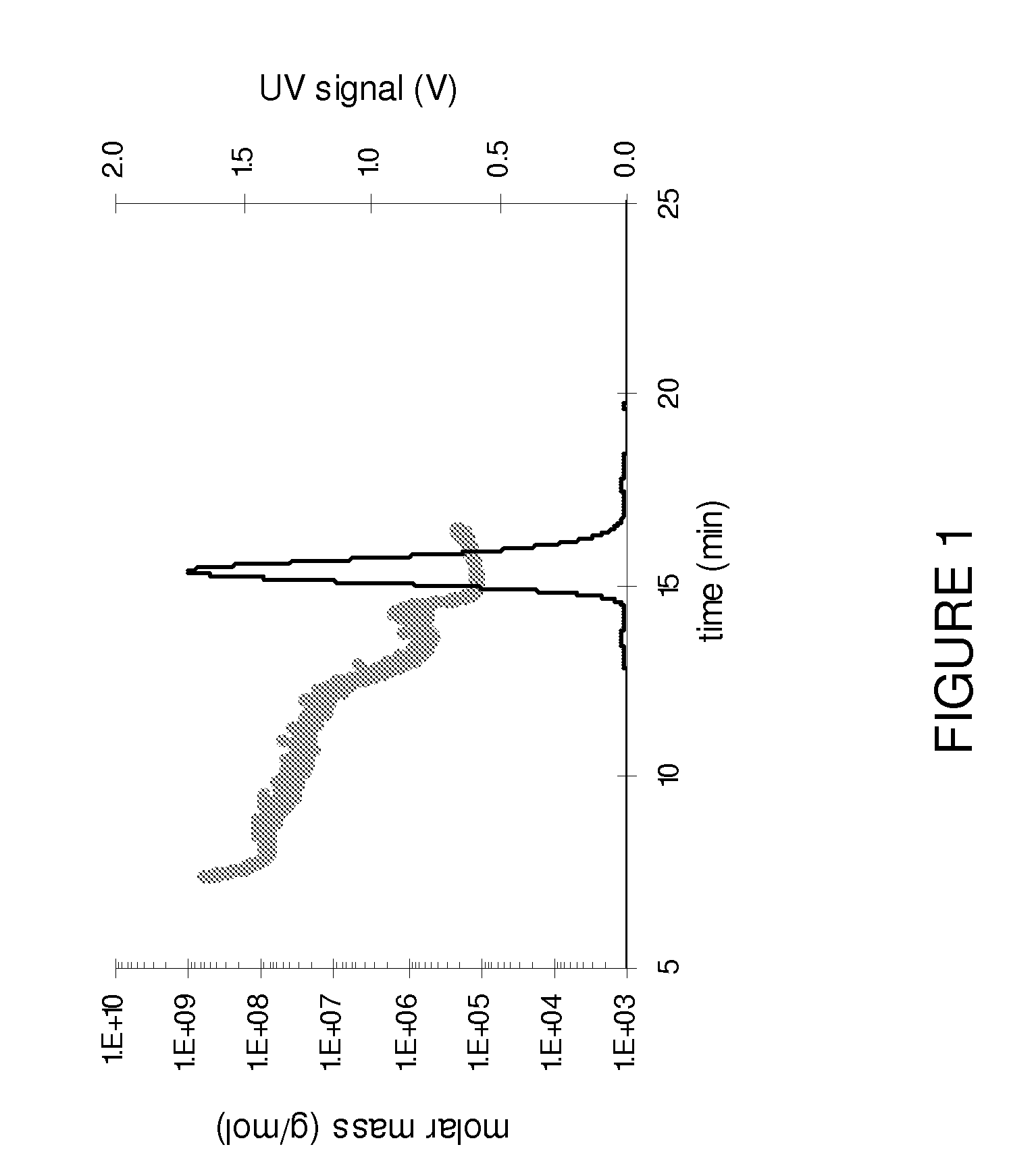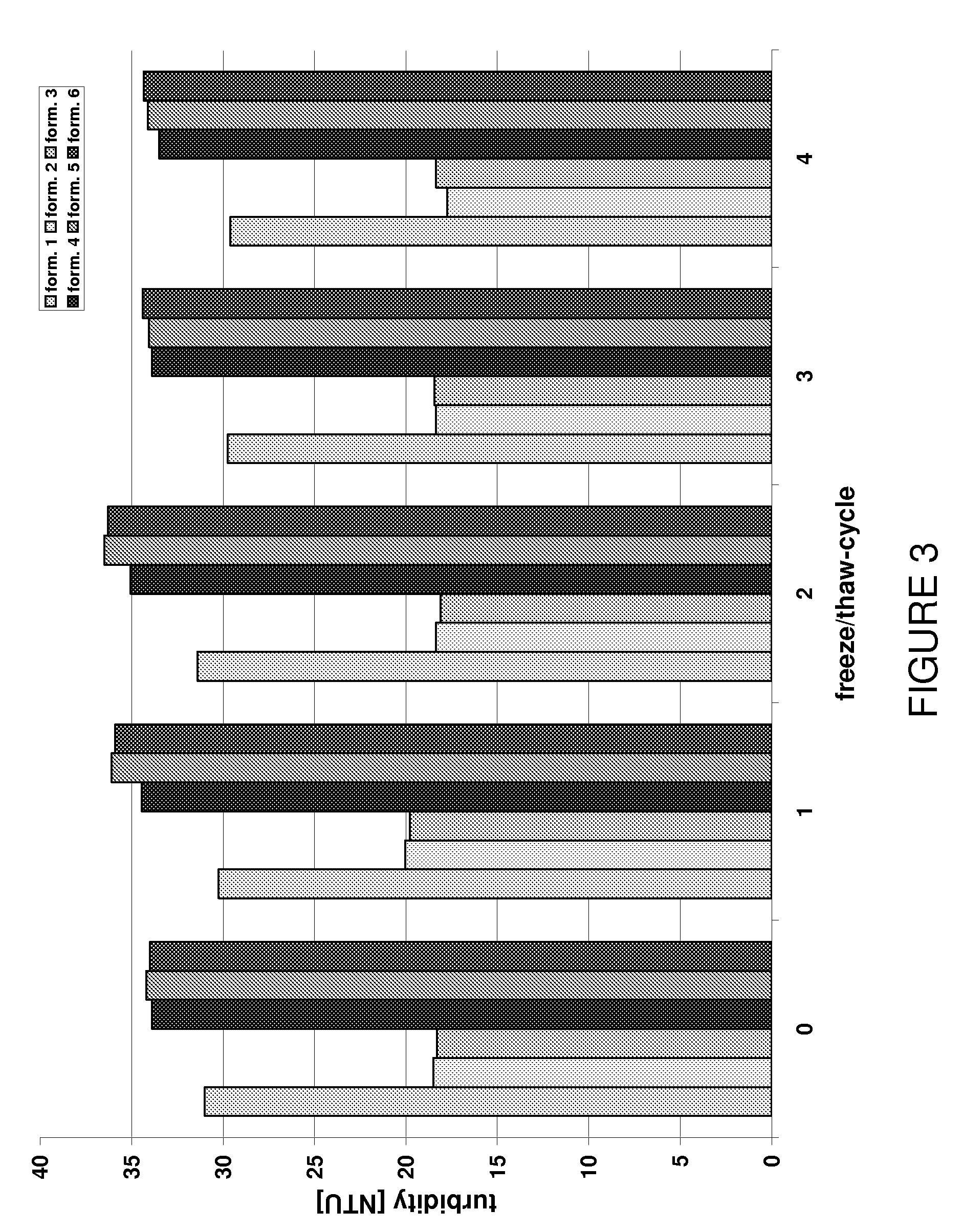Stable high protein concentration formulations of human Anti-tnf-alpha-antibodies
a technology of anti-tnf and alpha-antibodies, which is applied in the field of therapeutic proteins, can solve the problems of increasing the risk of adverse events in patients, reducing the potency of therapeutic proteins, so as to maintain physical and chemical stability over extended periods, increase the concentration of sugar alcohol excipients, and the effect of suitable viscosity
- Summary
- Abstract
- Description
- Claims
- Application Information
AI Technical Summary
Benefits of technology
Problems solved by technology
Method used
Image
Examples
example 1
Improving Stability of Human Anti-TNF Alpha Antibody Liquid Pharmaceutical Formulation
[0189]This Example provides results of experiments aimed at improving the stability of the pharmaceutical formulation of the antibody adalimumab.
Materials and Methods
[0190]Adalimumab (subclass G1, about 47 kDa) was formulated in a modified pharmaceutical formulation in order to generate a liquid parenteral dosage form at 50 mg / mL final drug concentration. Previous formulation experiments had determined that a phosphate / citrate buffer system was superior to other buffer systems in terms of protein stabilization of adalimumab. Consequently, improved stability was addressed via addition of excipients for a liquid 50 mg / mL dosage. All excipients used were of highest purity (“pro analysis” grade) and purchased from Merck KGaA, Darmstadt, Germany. Mannitol was sourced from Mallinckrodt Baker B. V., Deventer, Holland.
[0191]Analysis of visible particulate matter was conducted according to the regulation of...
example 2
High Concentration Adalimumab Formulation
[0231]The following example provides the ingredients for a number of high concentration protein formulations comprising the ant-TNFα antibody adalimumab. Surprisingly, the formulations described below had a number of advantageous properties, despite the high concentration of antibody, i.e., about 100 mg / mL.
[0232]A number of characteristics of the formulations (referred to as F1 to F6) were studied relative to the commercial 50 mg / mL adalimumab formulation (F7), including turbidity. The turbidity of the solutions was determined by analysis of the undiluted solution. Turbidity is reported as NTU values (Nephelometric Turbidity Units).
[0233]Visible particle contamination was determined by visual inspection as described in German Drug Codex. Subvisible particles were monitored by the light obscuration method according to USP. Dynamic light scattering analysis of diluted solutions was employed to assess the hydrodynamic diameter (reported as the m...
example 3
Stability of High Concentration Adalimumab Formulation Against Freeze / Thaw Stress
[0239]In order to demonstrate that adalimumab formulations are stable at 100 mg / mL protein concentrations, freeze / thaw stress (freezing performed at −80° C., thawing performed at 25° C.) experiments were carried out.
[0240]An array of analytical methods sensitive to particle formation was used to detect potential physical instabilities. Turbidity was measured as an indicator of the development of particle aggregates in the colloidal or in the visible range. The turbidity (reported as NTU values) did not change significantly even after the fourth cycle of freeze / thaw (FIG. 3). Increased turbidity of solutions of higher pH may be attributed to increased protein-protein interactions due to lowered charge repulsion at the pH approaching the pI of the protein (adalimumab 8.5) (Wang et al. (2007) J Pharm Sci 96 (1) 2457-2468).
[0241]Dynamic light scattering was employed as a method for determining particle size...
PUM
| Property | Measurement | Unit |
|---|---|---|
| concentration | aaaaa | aaaaa |
| concentration | aaaaa | aaaaa |
| pH | aaaaa | aaaaa |
Abstract
Description
Claims
Application Information
 Login to View More
Login to View More - R&D
- Intellectual Property
- Life Sciences
- Materials
- Tech Scout
- Unparalleled Data Quality
- Higher Quality Content
- 60% Fewer Hallucinations
Browse by: Latest US Patents, China's latest patents, Technical Efficacy Thesaurus, Application Domain, Technology Topic, Popular Technical Reports.
© 2025 PatSnap. All rights reserved.Legal|Privacy policy|Modern Slavery Act Transparency Statement|Sitemap|About US| Contact US: help@patsnap.com



